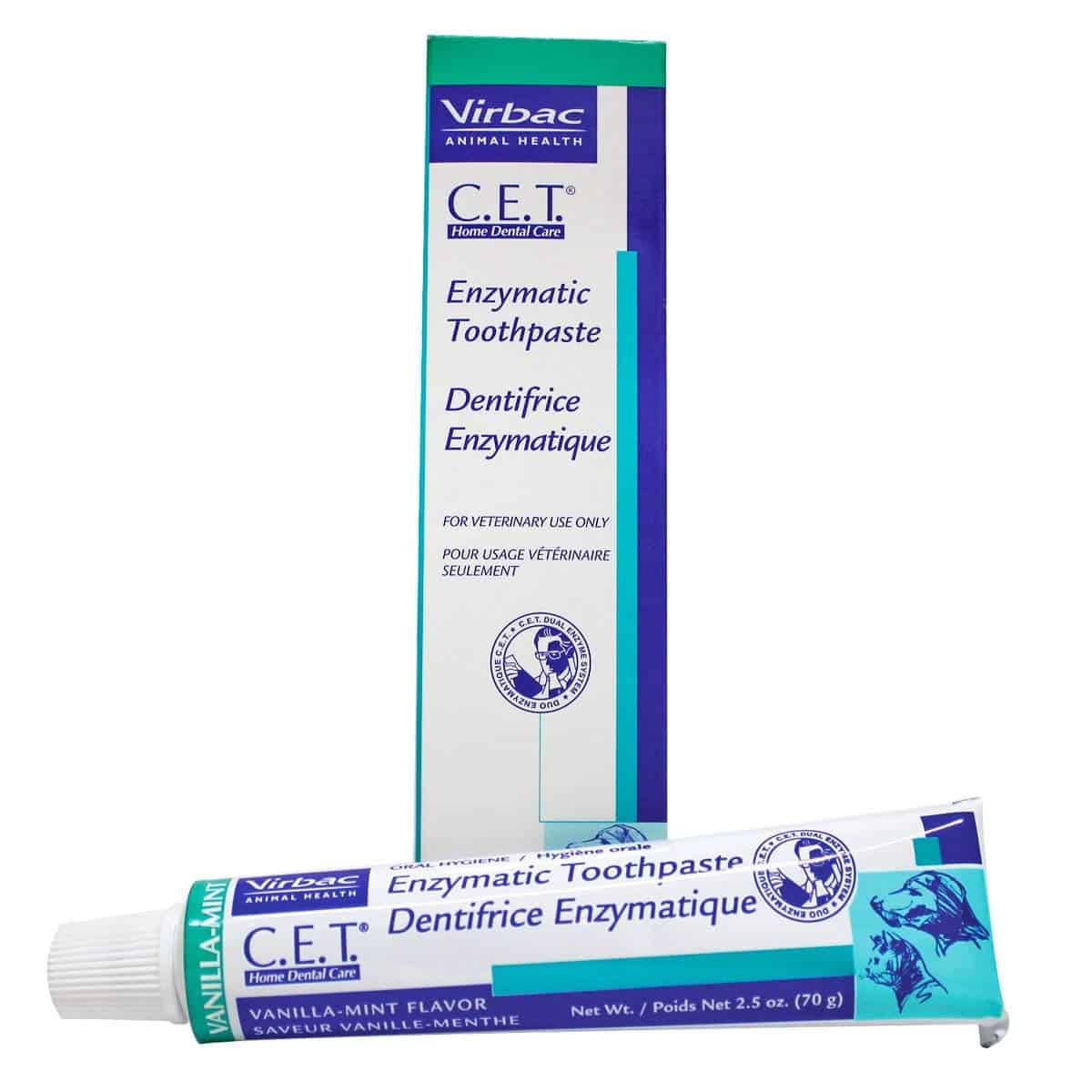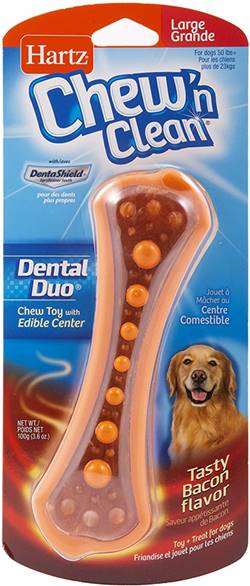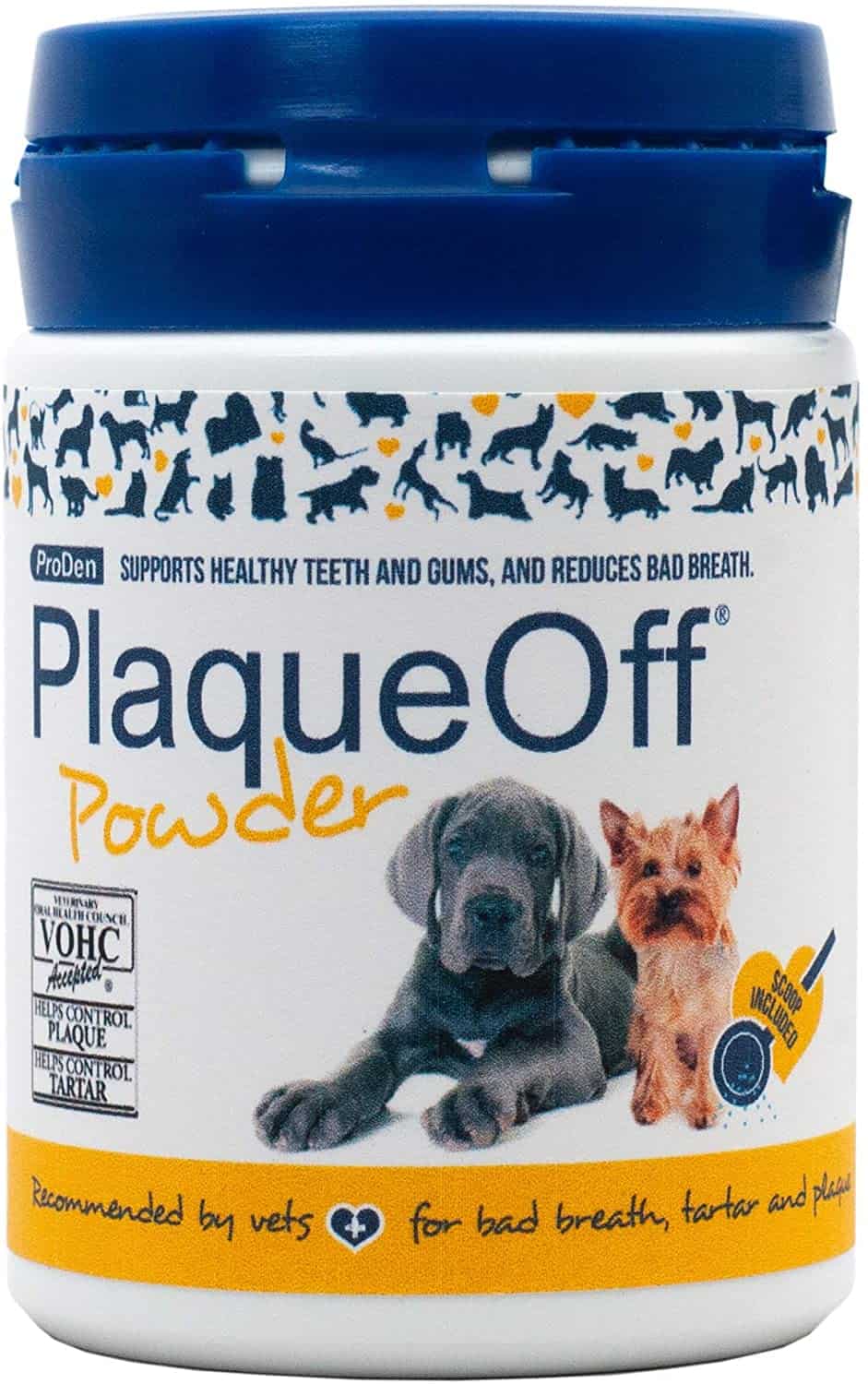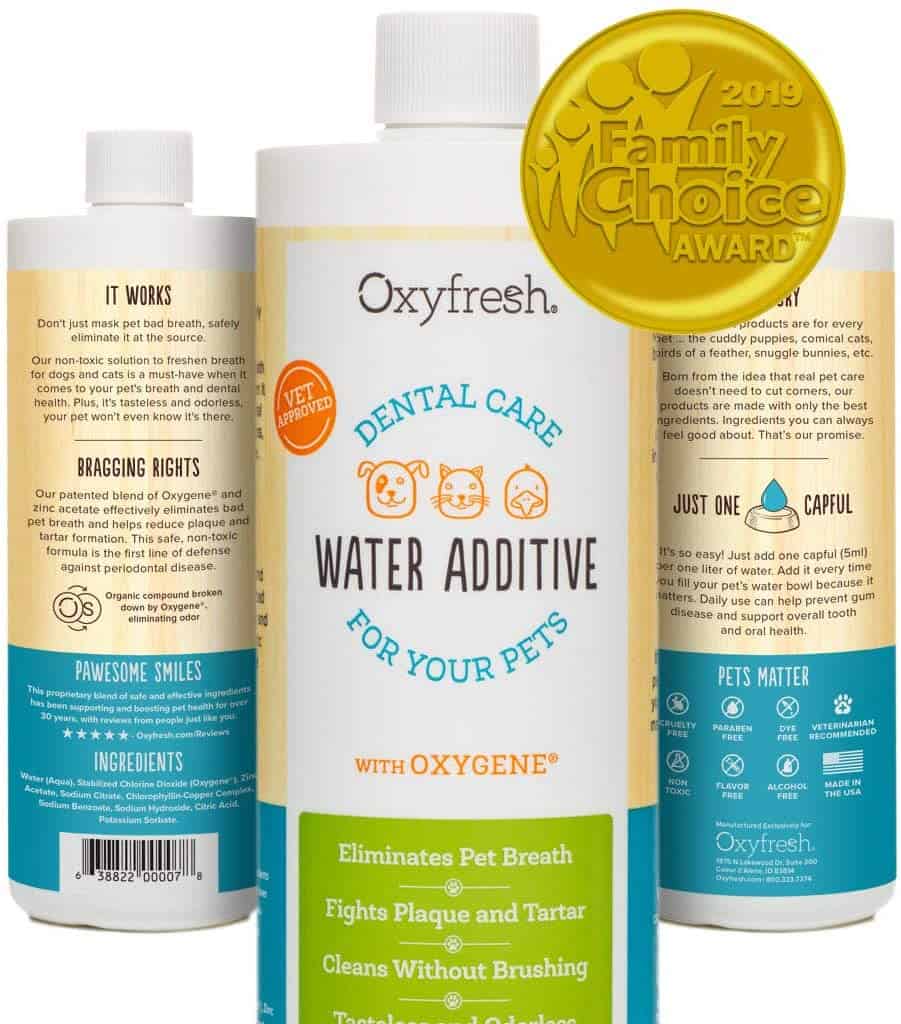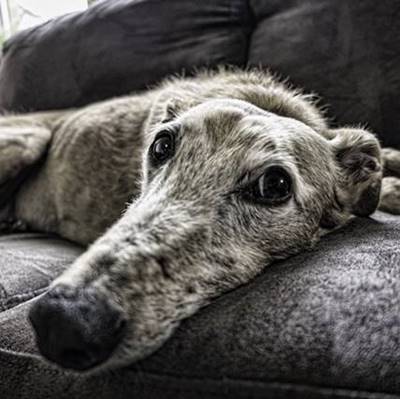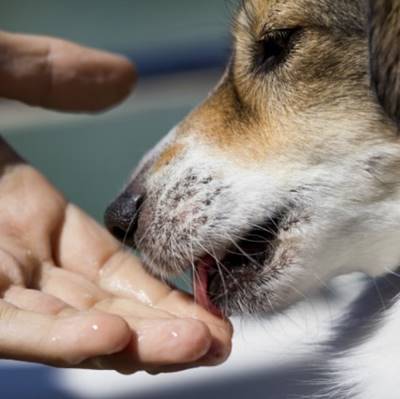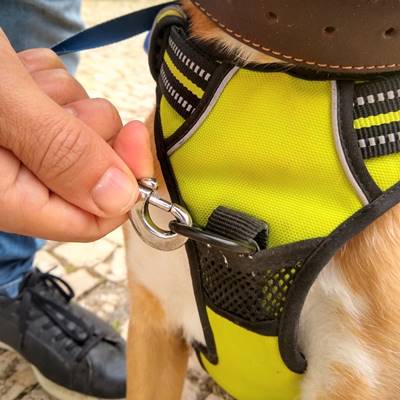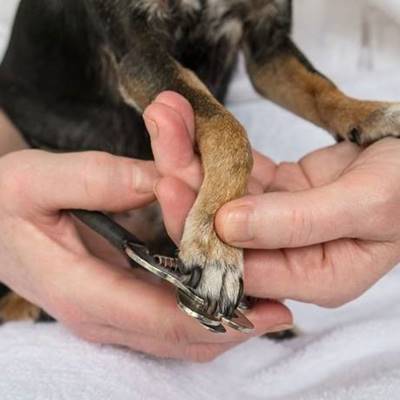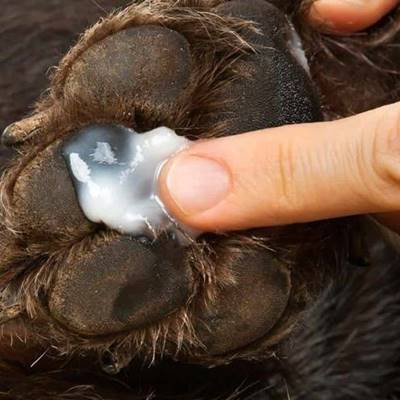How to Clean Your Dog’s Teeth Without Brushing
by mylifewithpets | Last updated on October 26, 2021
Some of the links bellow are affiliate links, meaning, at no additional cost to you, we'll receive a commission if you click through and make a purchase.

Dental health is very important for a dog’s wellbeing.
However, they don’t know it and, quite honestly, they don’t look like they care much that their mouths smell like something died inside or that their teeth look dreadful.
And that makes our jobs as dog parents soooo much harder!
The last time we tried to brush our dogs’ teeth they almost ate the brush and our hands along with it.
So we had to get creative and think of ways to help their teeth without losing a limb.
And after reading this, you’ll know them too!
Why Dental Health is Such a Big Deal for Dogs
Well, the reasons aren’t much different than the ones that make dental hygiene so important for humans too.
The first reason is pain. Rotten teeth cause dogs a lot of pain when they eat, as well as bleeding.
Then you have the fowl breath that can be felt a mile away.
Also, rotten teeth decay, break and fall off or, if it gets really bad, spread bacteria into the dog’s blood circulation with life threatening consequences.
The worst part is, all of this only gets worse over time.
We know it because we’ve neglected our dogs’ teeth for longer than we would care to admit.
We though the chews would be enough and so little time to even think about it and always figured we’d take care of it the next day. And the next and the next.
It’s a huge mistake to think like we did, it’s a problem that builds up and, quite honestly, by doing that you’re hurting your dog.
A dog’s dental health is a priority for any dog parent who wants to do their best for their dog.
How to Spot Dental Problems in Dogs
The tell-tale signs to look for are:
- Red or bleeding gums
- Blood on something he’s chewed or in his saliva (toys, treats, food, whatever it is)
- Complaining when eating or yawning
- Loose, discolored or broken teeth
- Bad breath
- Lumps or bumps inside his mouth
- He doesn’t want you to touch his head
- He’s struggling to eat
- He’s chewing the side of his mouth
- He’s scratching his mouth and jaw with his paw
What is Happening With Your Dog’s Teeth?
The main villains as far as your dog’s mouth is concerned are Plaque and Tartar.
Plaque is a gummy substance that forms in your dog’s teeth after eating.
Mixed with the dog’s saliva,(in about 24 hours) it hardens and accumulates around the teeth and between them and the gum, eventually transforming into tartar.
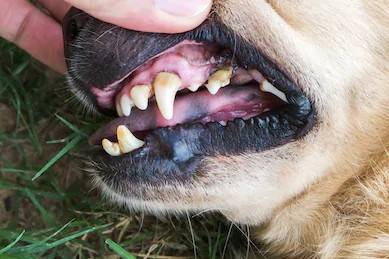
Tartar forms a hard, rough surface where bacteria grows and multiplies, which can then cause inflammation of the gums (gingivitis that leads to periodontal disease).
Tartar buildup may also lead to your dog’s gums receding away from the teeth roots.
This exposes the sensitive, enamel free part of the teeth, causing pain and sensitivity.
Related: 10 Warning Signs of Pain in Dogs
5 Ways to Clean Your Dog’s Teeth Without Brushing
For now, forget about all the nastiness we’ve told you about earlier.
Because that’s what happens when you DON’T take care of your dog’s dental hygiene properly.
We can honestly say we’ve tried over the years dozens of products, tested so many options until we pretty much lost count.
Ultimately, we found a plan that works, one that our dogs tolerate and that it doesn’t mean civil war in our home to implement.
Read all about it and try it yourself!
Tip 1 – Enzymatic Toothpaste
Let us start by saying that you should never try and clean your dog’s teeth with human tooth paste, which can actually be toxic for them.
Then, focus on the word enzymatic because that’s what makes all the difference.
There are dozens of dog tooth pastes out there but most won’t work without brushing and we’ve already established most dogs won’t do it.
Enzymatic tooth pastes are brilliant because just adding them to your dog’s saliva will prevent plaque buildup, without any brushing required.
Yes there are other enzymatic tooth pastes but this one is by far the best.
Dogs love the taste and it immediately eliminates stinky breath.
What more can you ask for?
Tip 2 – Dental Chews
Again, if you look you’ll probably find dozens if not hundreds of dog chews, most of them boasting dental benefits.
But we’ve actually realized some just made the problem worse because they were leaving their own debris attached to our dogs’ teeth.
Also, most of them would only make their breaths worse!
Then, our vet suggested this one.
Gluten-free, vegetarian and natural, filled with prebiotics that are good for your dog’s digestion, you can tell these chews are highly recommended by vets who specialize in gastrointestinal health, right?
But don’t worry, your dog will love the taste just the same if not more.
And we love that their breaths are fresher and that they’re not getting diarrhea from it like it happened with some of the other chews we tried.
Tip 3 – Chew Toys
We’ll say that most chew toys are actually helpful for your dog’s teeth.
The groove and edges on chew toys massage your dog’s gums and clean the teeth while he’s having a blast!
So, naturally, we have a big chest filled with them, they’re actually our dogs’ favorite kind of toys and, of course, we encourage that.
This chew toy is probably the favorite one around here, so much so we have more than one to keep our dogs from fighting over it.
It’s durable and tastes like bacon (or so we’re told).
Our dogs absolutely love them!
Tip 4 – A Food Supplement
We also add a seaweed-based powder to our dogs’ food.
This will remove the food that gets lodged between their teeth and the gums and form plaque.
The dogs don’t seem to notice it and we think it works pretty well, considering we’ve using it alone for a couple of weeks and loved the outcome.
Overtime using it, you’ll really notice the difference in your dog’s teeth and how you’ll find less and less plaque needing to be removed.
Tip 5 – A Water Additive
Some dogs have a natural tendency to form plaque, it has to do with their saliva.
Or maybe you’ve noticed your dog’s teeth already need a bit of extra help.
Perhaps you just want to cover all the basics
For whatever the reason, adding an additive to your dog’s water is a great idea!
For dogs who are really picky with their food and won’t accept the seaweed or for homes with both cats and dogs, in order to offer the felines some teeth protection as well.
Just add it to the water for full protection.
We love this brand because t’s odorless and appears to be tasteless (we didn’t actually try it but never noticed any dog or cat reacting differently to the water).
We actually add it to the large water fountain we have for all of our pets to drink from. Then we make sure to supplement once a day with fresh water and completely substitute the water once a week.
When using this additive, the first thing you’ll notice it the fresh breath.
We couldn’t be happier with it.
Recommended Reading

